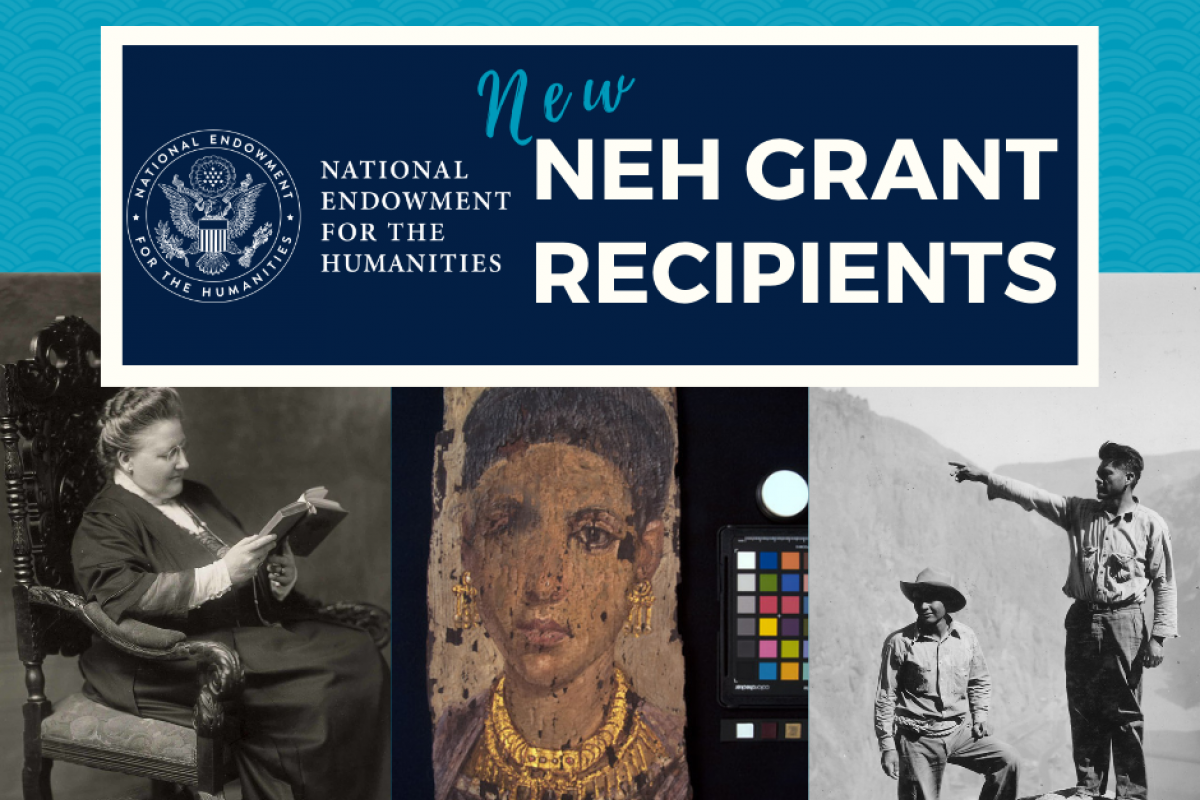 The National Endowment for the Humanities (NEH) recently announced $32.8 million in grants to support 213 humanities projects in 44 states, including a research Fellowship for Sinclair Bell, Professor of Art History at Northern Illinois University, to research the visual and material evidence of race and ethnicity in the Roman Empire (c. 100 BCE-200 CE).
The National Endowment for the Humanities (NEH) recently announced $32.8 million in grants to support 213 humanities projects in 44 states, including a research Fellowship for Sinclair Bell, Professor of Art History at Northern Illinois University, to research the visual and material evidence of race and ethnicity in the Roman Empire (c. 100 BCE-200 CE).

Sinclair Bell, Professor of Art History
This round of NEH Fellowships and Awards for Faculty will support humanities scholars in researching and writing books on connections between the Black Death and the origins of the Italian Renaissance, the influence of John Milton’s blindness on the poetic language of Paradise Lost, the creation of American Catholicism, and a cultural history of the telephone in America.
“As we conclude an extremely difficult year for our nation and its cultural institutions, it is heartening to see so many excellent projects being undertaken by humanities scholars, researchers, curators, and educators,” said NEH Chairman Jon Parrish Peede. “These new NEH grants will foster intellectual inquiry, promote broad engagement with history, literature, and other humanities fields, and expand access to cultural collections and resources for all Americans.”
In this highly competitive funding cycle, NEH funded eight percent of the Fellowships proposals that it received.; Bell’s fellowship was one of nine awarded in the State of Illinois.
Bell’s research project will investigate how Roman artists represented the peoples whom they referred to as Aethiopians (i.e., “black” Africans) through visual representations and material culture, and explore issues related to the social functions, patronage, and viewership of these works. “Because the visual and material culture of the Roman Empire provides an abundant record of cultural encounters with Aethiopians, some real but most imagined, it renders visible complex formulations of foreignness, social hierarchies, and power—in short, of who was in and who was out in the empire. This project is therefore interdisciplinary in its aims and methodology, as it sits at the intersection of African studies, Classical studies, archaeology, and art history,” he said.
The project was previously supported by grants from the American Philosophical Society and the Hutchins Center for African and African American Research at Harvard University.
Bell specializes in the art and archaeology of ancient Italy, and has taught courses in Greek, Etruscan, Roman, and Egyptian art and archaeology at NIU since 2008. He credits the recent support and success of his research project in large part to the highly engaged and diverse student body at the School of Art and Design, where his teaching and research interests have long been in productive synergy.
“Since 2011, I have taught five different seminars to undergraduate and graduate students on the visual and material culture related to socially marginalized groups in ancient Greece and Italy, including foreigners, slaves, and freed people,” Bell said. These seminars have drawn upon a rich and varied body of evidence as well as contemporary theoretical approaches in attempting to recapture the external perceptions toward and interior experiences of subaltern groups. As a consequence of teaching these seminars—as well as conducting my own object-driven research (through museum and archival study and fieldwork) and delivering numerous public lectures—I have become familiar with the ancient material culture and conversant in the wider background literature to this area of study that allowed me to lay the groundwork for a book-length study on this topic.”
A full list of grants from the NEH by geographic location is available.


